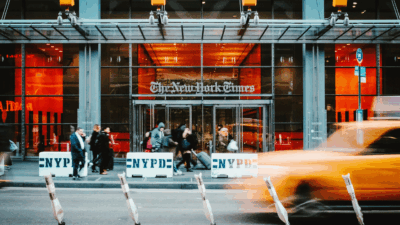
Sign up for smart news, insights, and analysis on the biggest financial stories of the day.
So much for the Trump Bump — even without “the best thing that ever happened to the media,” the New York Times is having a great year.
The company announced Wednesday third-quarter profits surged 63% thanks, in part, to a predicted rebound in advertising revenue (which tanked in the early days of the pandemic) and 455,000 new paying customers, giving the Gray Lady its best third-quarter since first constructing its big, beautiful paywall a decade ago.
Politics, Puzzles, and Sheet-Pan Dinners
Does this mean Americans are becoming more informed about current events and invested in journalism’s capacity to hold truth to power? Kinda-sorta.
Roughly 70% of new subscribers bought access to the Times’ news. The other 30% bought subscriptions to Wirecutter (its Consumer Reports-esque products review and shopping site), a games vertical (which includes the beloved crossword and cult-hit “Spelling Bee”), and the “NYT Cooking” section (offering recipes dating back to times when newspapers actually mattered).
The profits come as the Times successfully converted freeloaders into paying customers :
- The paper added a paywall to 18 newsletters in August, and one to Wirecutter in September, which garnered 10,000 subscribers in a month.
- International subscribers — a market that includes the more than 100 million English speakers on the planet — surpassed 1 million in the quarter.
Ad-ons: Times’ advertisers haven’t cut back on spending due to supply-chain issues, nor have they felt the fall-out of Apple’s new privacy policy, which requires iOS developers to get users’ permission to be tracked.
Winner Take All: It is worth noting news junkies increasingly have fewer content options. More than one in five newspapers have closed in the past decade and a half. Last year it was reported that the Times had more digital subscribers than the Washington Post, The Wall Street Journal, and Gannett’s 250 local newspapers combined. As Ben Smith, the Times’ own media columnist wrote: “The story of consolidation in media is a story about the New York Times itself.”











